Fall, in moderate climates, is a key time to look out for pests on bonsai. In colder climates, many insects are killed by cold weather. Not where I live. Within the past week I’ve found all varieties of unwanted guests in the garden. This week I’ll focus on scale.
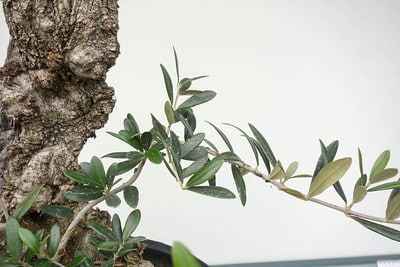
Healthy looking olive foliage
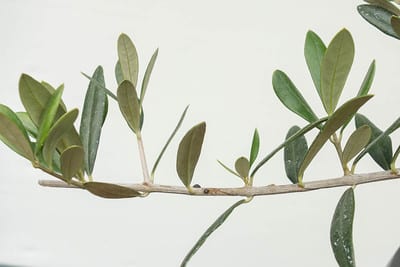
What’s this – a small black dot. Could it be?
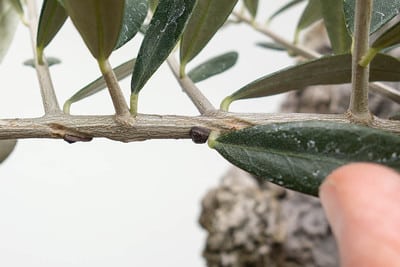
Yes, it’s scale
Scale come in thousands of shapes and sizes, and just about all varieties of bonsai are susceptible to some scale or other. Closely inspecting your trees on a regular basis is the best way to stave off bad infestations.
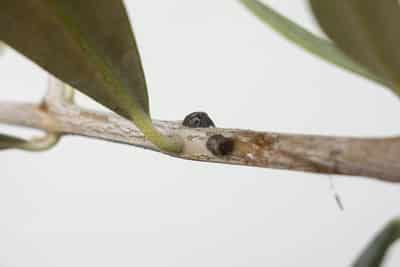
Scale on olive foliage
The crafty creatures on this olive grew between the wire and the branch making them very hard to spot. It was when I de-wired this olive that I realized I had scale. It was the first time I’d seen scale on the tree.
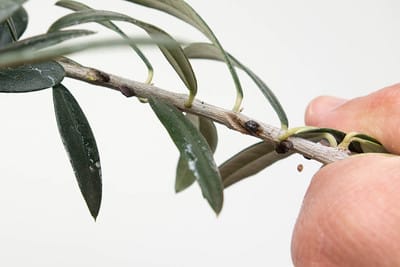
Scale
How do scale get around? Once you see them on your trees, they likely don’t. Newly hatched “crawlers” find a good spot to latch on and rarely move after that, relying instead on their typically hard shells for protection. Scale can also move from plant to plant via the wind and can be carried around by other insects like ants.
What did I do when I found them? I picked them off with tweezers. The next step is to spray prophylactic oil. This works well for minor infestations – nastier infestations and tricky-to-treat scale like the pine needle scale require a stronger plan of attack – more on that Friday.
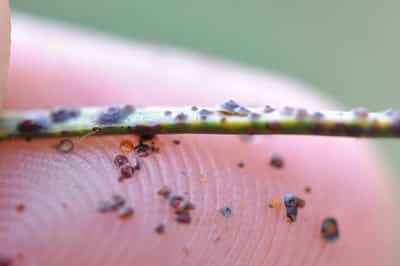
Tiny scale (photo courtesy Trung Ho)
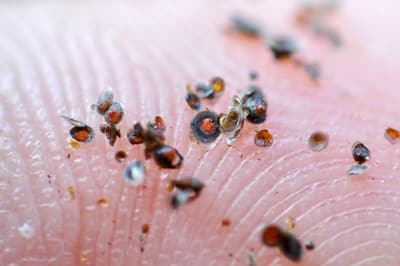
Tiny scale (photo courtesy Trung Ho)
Scale are commonly found on junipers too so be on the look out.
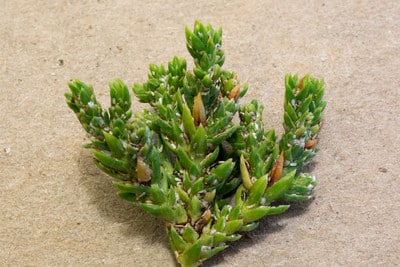
Scale on procumbens juniper
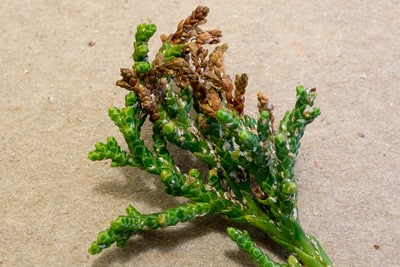 Scale on shimpaku
Scale on shimpaku
Subscribe to Bonsai Tonight
New Posts Delivered Every Tuesday and Friday
endsurg says
Since scales survive off of the nutrients of a leaf or branch and they sink their suckers into the veins, they are very susceptible to systemic insecticides. I find that using Bayer’s tree and shrub once or twice a year completely prevents scale growth and/or kills them.